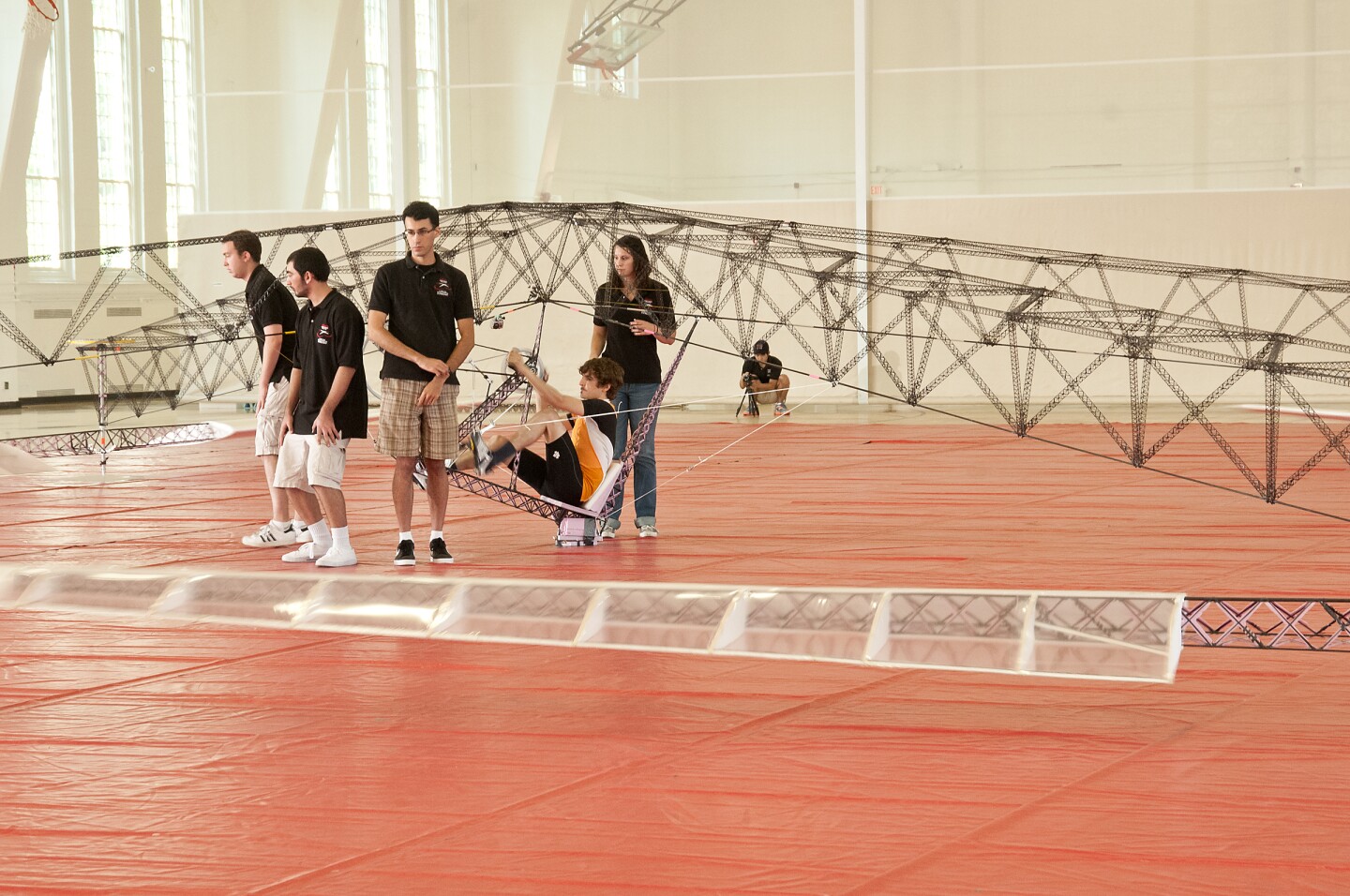For over 30 years, the US$250,000 cash prize for the American Helicopter Society's Igor I. Sikorsky Human Powered Helicopter Competition prize has looked decidedly secure, but Gamera II has changed all that. Last week, Clark School of Engineering team pilots came so close to breaking one of the competition's major milestones that they could virtually smell it. Ph.D. candidate from Kyle Gluesenkamp from the School's mechanical engineering department, hand-cranking and pedaling like his life depended on it, managed to keep the huge quad-rotor craft aloft for 50 seconds, an impressive new world record that's currently awaiting validation by the National Aeronautic Association (NAA).
The University of Maryland's Gamera team had high expectations from the lighter, more efficient refinement of the original human-powered helicopter that pilot Judy Wexler powered into the record books last year. Thanks to an all-male team this year, her 11.4 second flight record as the longest undertaken by a female pilot was never going to be under threat from these latest strides towards claiming the elusive Sikorsky prize, but the 40-strong Gamera II team were confident that much better times would be achieved. A 20-second test flight on Sunday June 17 only served to fan the flames of hope.

On the first day of flying under the watchful gaze of NAA judge Kris Maynard, all the hard work paid off when pilot Colin Gore notched up a pretty impressive 35 seconds, but it was colleague Gluesenkamp who took the record with a flight time of 50 seconds the next day. In spite of valiant efforts by all three pilots, the magic minute was not reached by the time Maynard packed away all the video footage for close scrutiny by NAA officials, who will hopefully validate the new record time for human-powered helicopter flight in the coming weeks.
The three days of official record attempts were not without a fair amount of off-screen drama, including a blade getting damaged as it hit the wall, repeated problems with drift and the nylon/steel chain snapping. Now the team will work on further refinements to get Gamera II to an altitude of three meters (9.84 feet) above the ground during a flight, before returning to the University's Reckord Armory in August to make further record attempts.
Source: Clark School of Engineering












